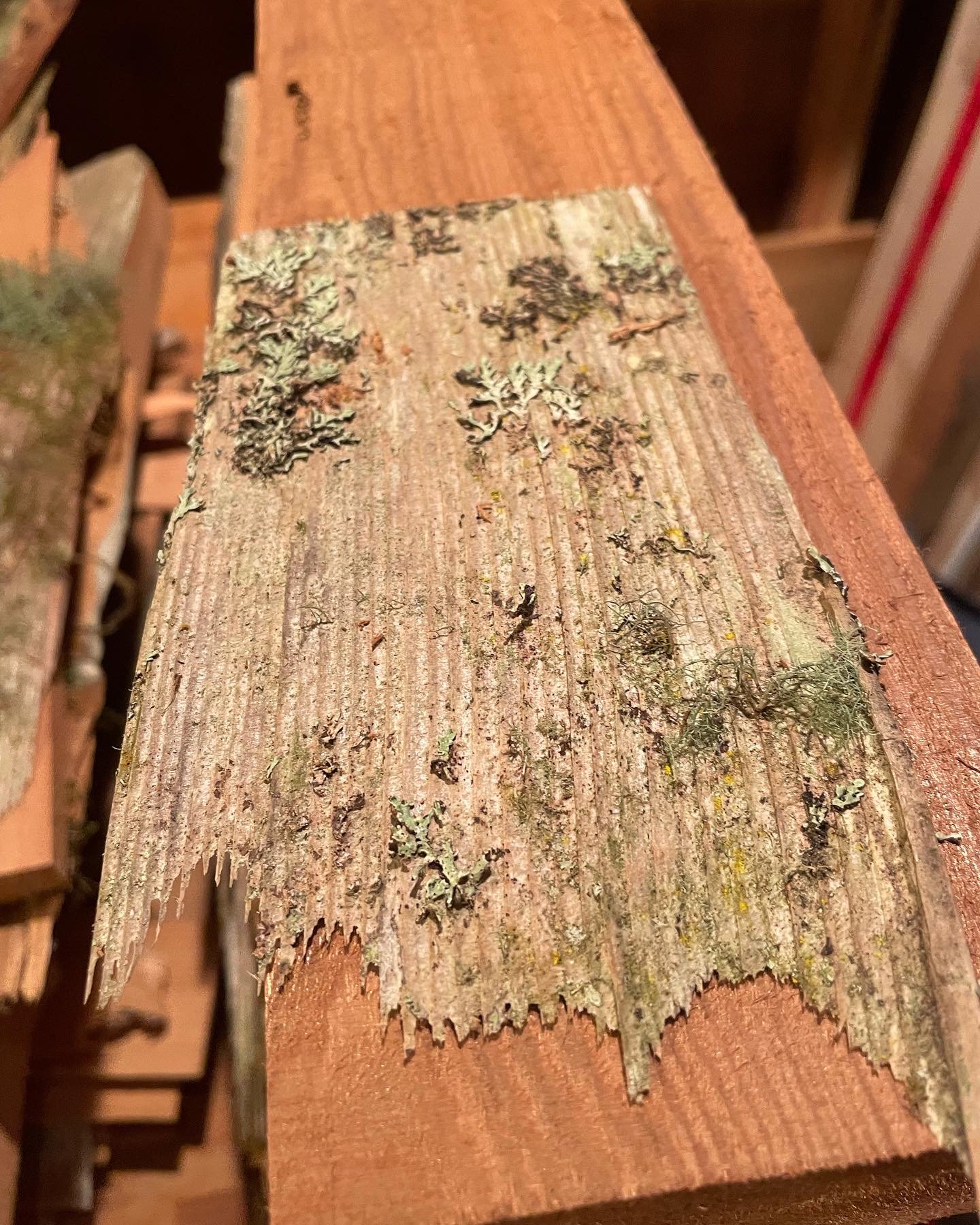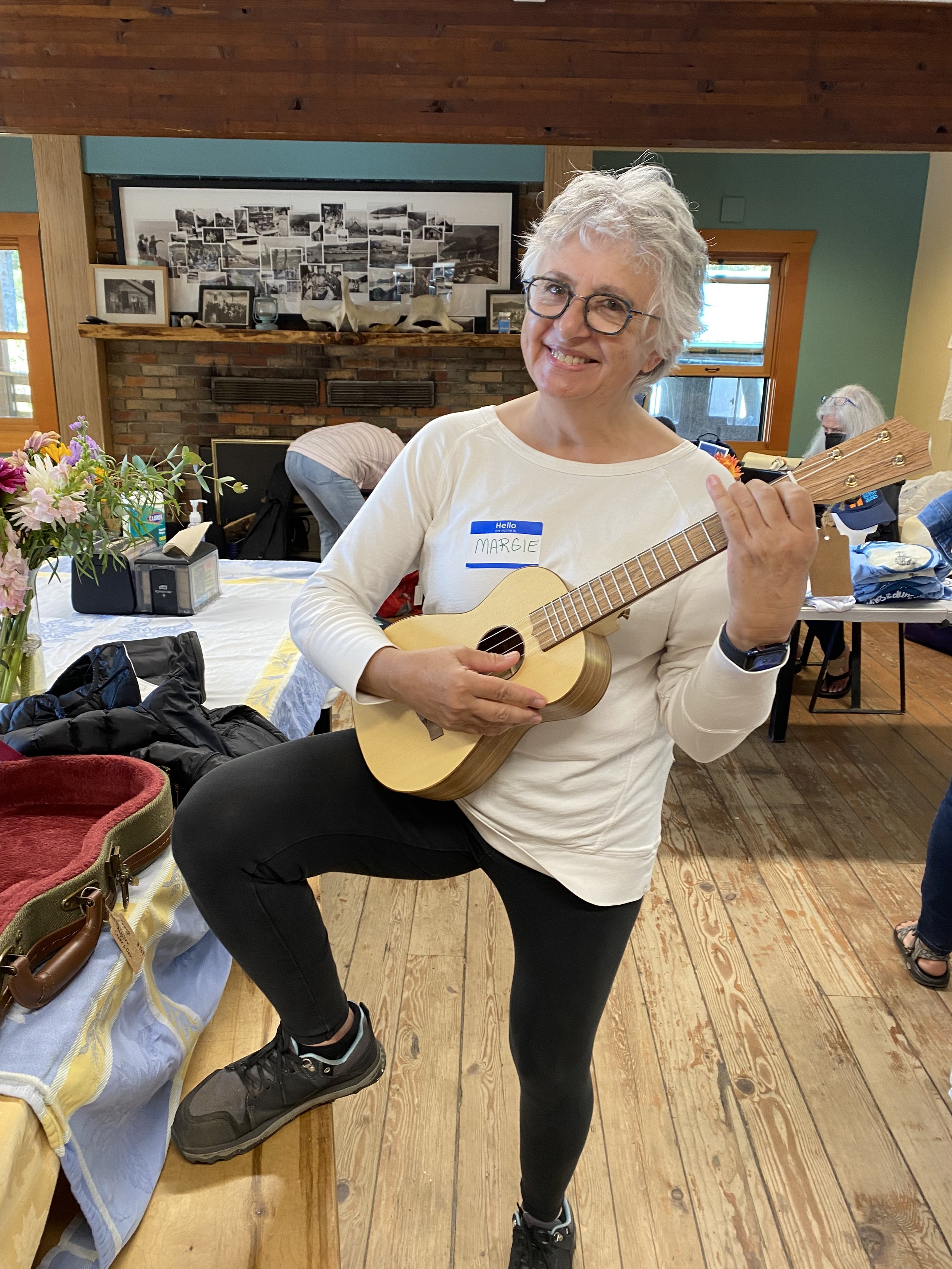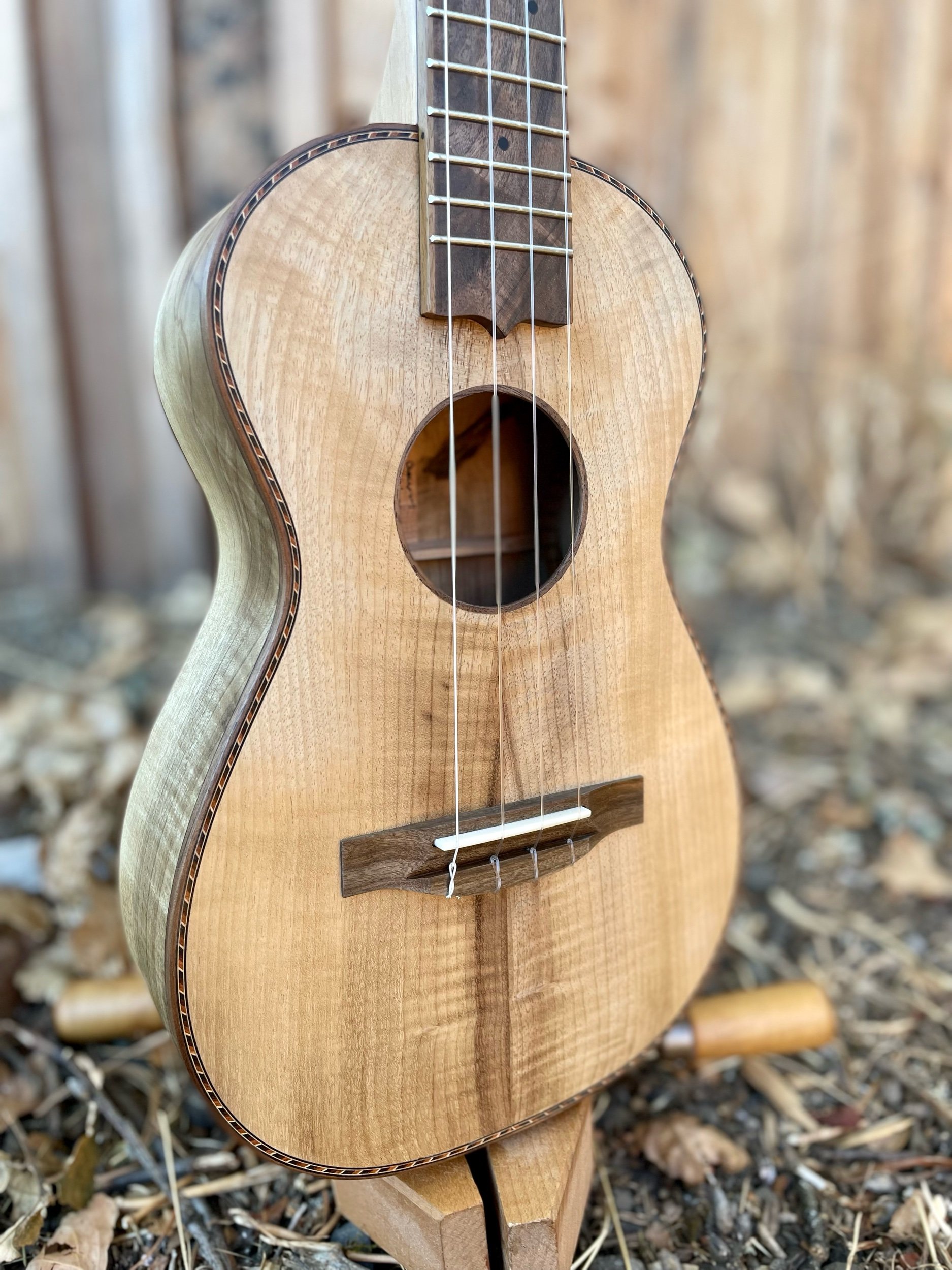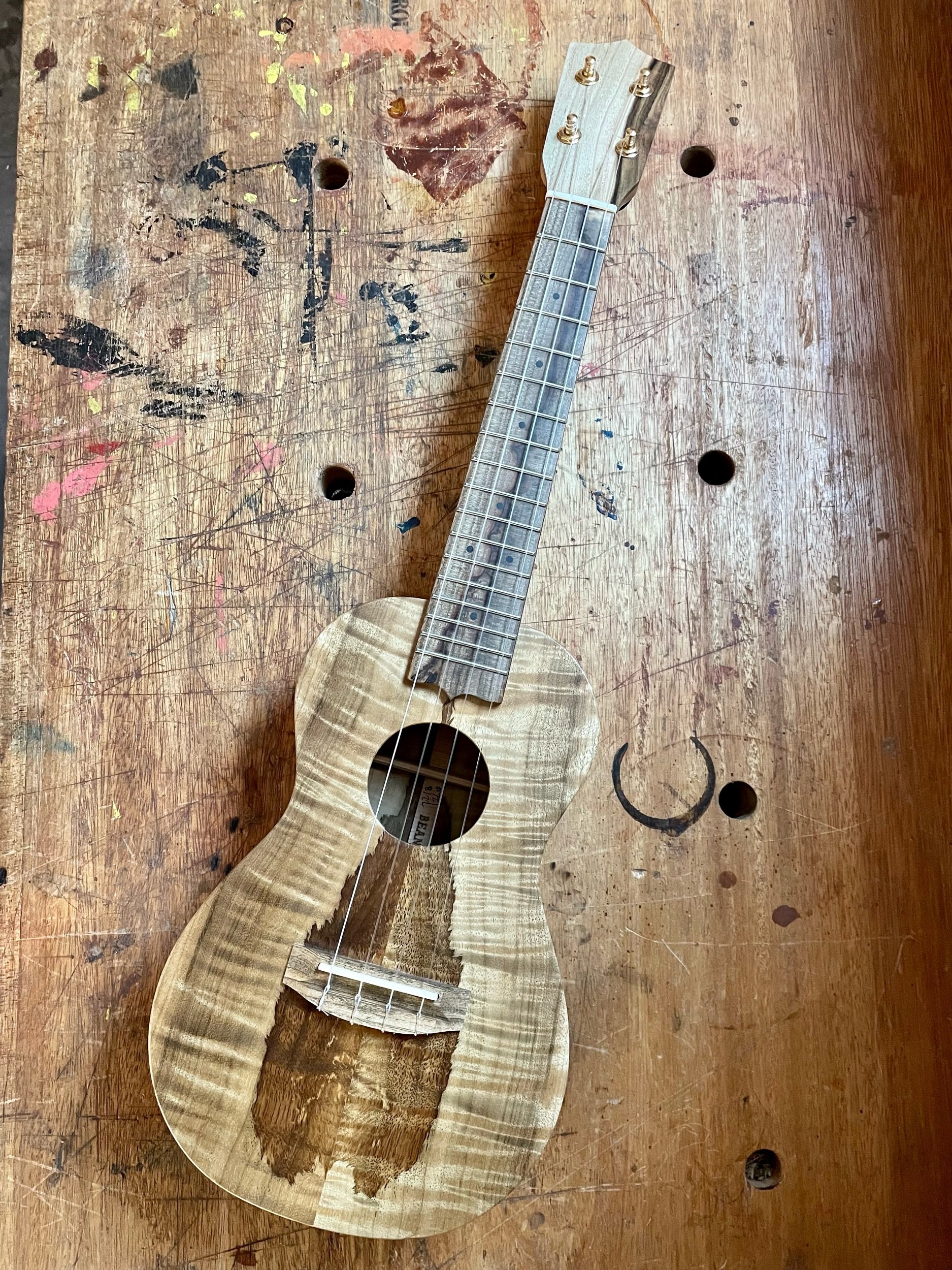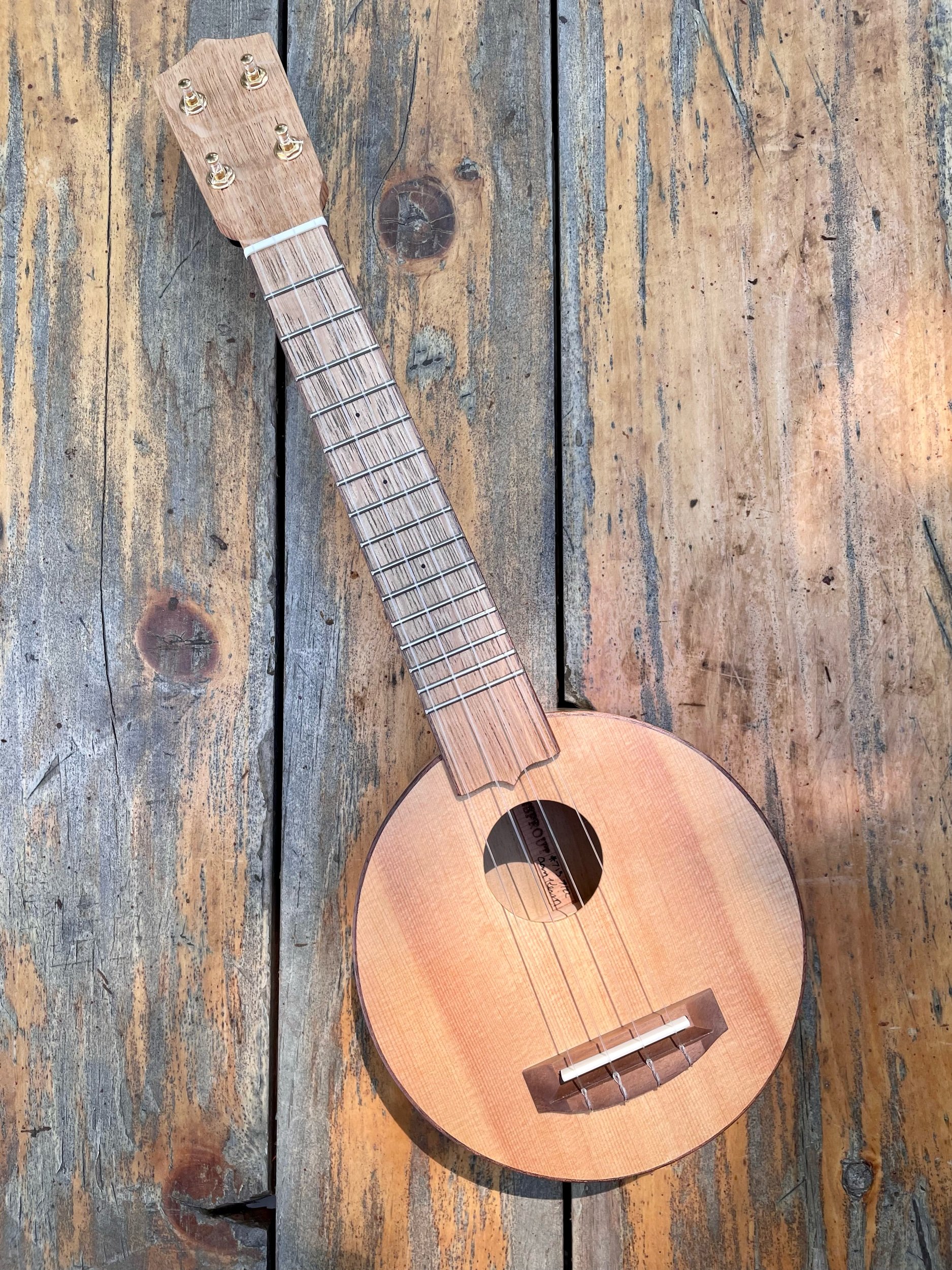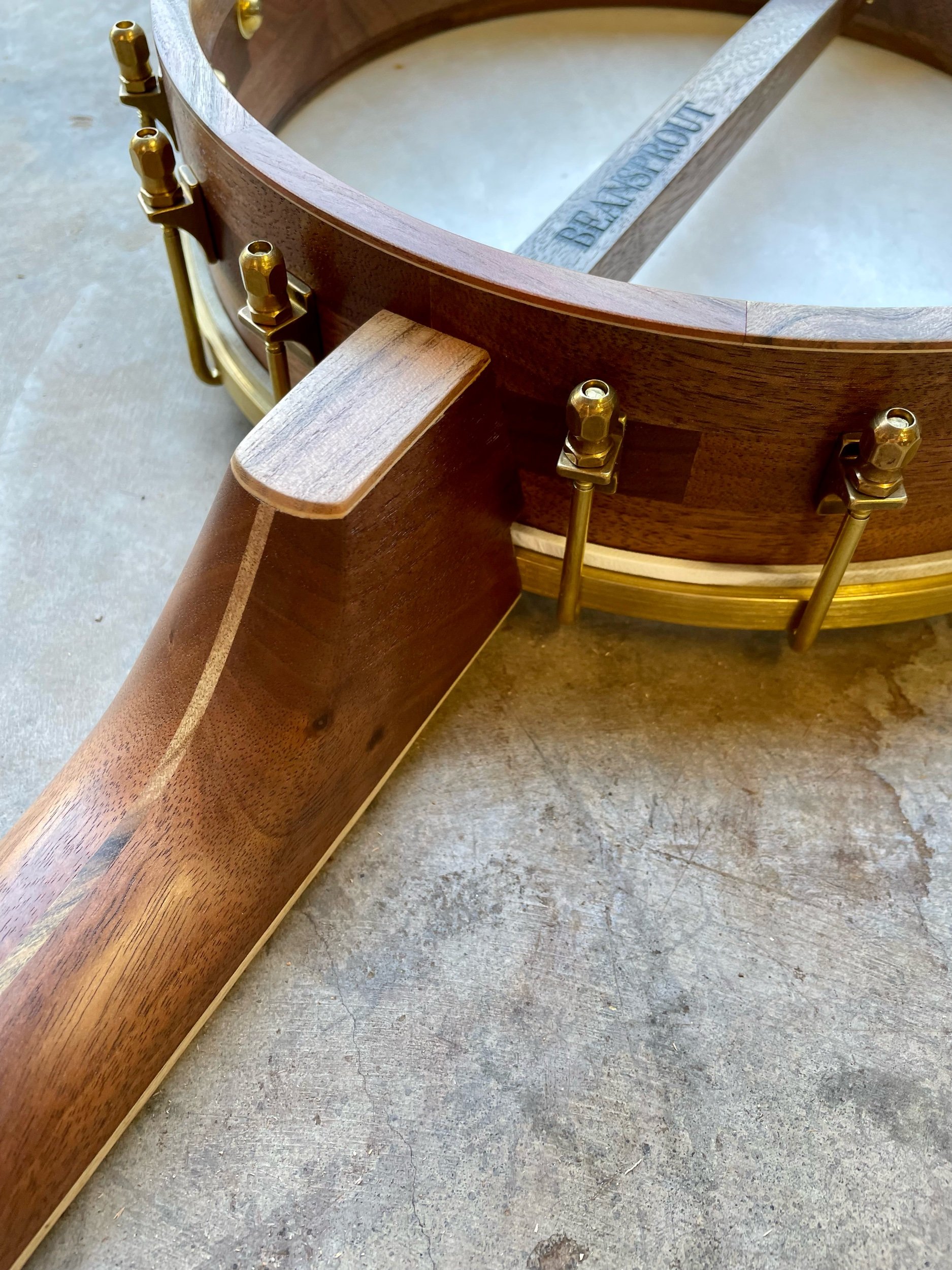This ukulele is for our friend Melany, who has run the Tunes in the Dunes event at Camp Westwind for the last 10 years. I wanted to make an instrument rooted in the beautiful place she lives, right on the Salmon River, across from Westwind.
The top, headate, endgraft and healcap are all Western Red Cedar from a fence post salvaged from her property. The top was planed and sanded while the rest retains the rough texture, moss and lichen from the post. The walnut back, sides and fretboard are from Hood River, from a standing dead tree likely planted over 100 years ago. I love all the swirling colors of it. I used Alder for the neck, as it is another Oregon wood vital to the forests and waterways. The binding is greenish Myrtle from the coast, tying it all together in a muted way. For the strap buttons, I used rusty fence staples from her post, I love their rough texture compared to the smooth wood.
If you peek in the sound hole, you will see a little collection of moss, shells and sand from Westwind. To help protect the vital Salmon River watersheds, go here to learn more and donate.











